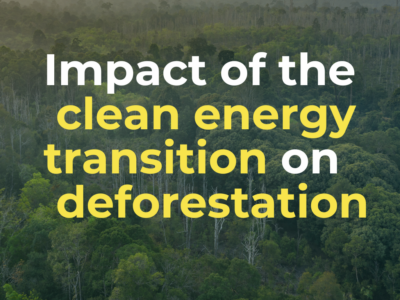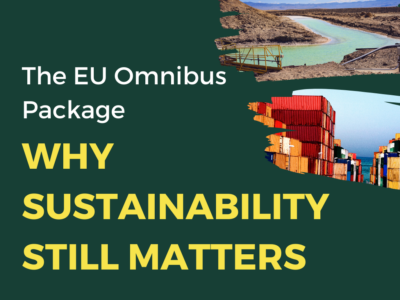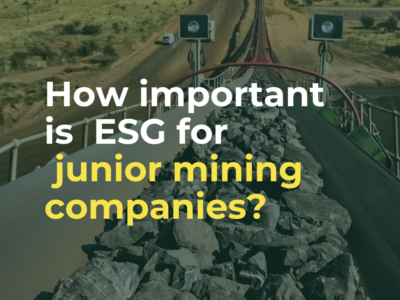
What’s the impact of the clean energy transition on the world’s forests?
The global demand for the critical minerals required for the clean energy transition continues to drive mining operations into forested areas, contributing to deforestation and biodiversity loss worldwide.
Sunil Abeyasekera, TDi’s ESG Consultant, explains: “The deforestation of primary and secondary forests occurs throughout the mining value chain, beginning in the mining scoping and exploration phase, to the construction of the mine and establishment of the networks and services needed to transport and process the ore. The encroachment of mining also affects established farms and plantations, threatening the livelihoods of local communities and polluting their nearby resources.”
Research shows that between 2001 and 2020, roughly 260,000 hectares of forest were lost due to mining activities on lands occupied or used by Indigenous Peoples and where local communities depend on forests for their livelihoods. Mining can negatively affect vegetation and soil, making it difficult to recover cleared lands and can cause air and water pollution that affect human health and surrounding ecosystems. This shows that consequences extend beyond environmental degradation, leading to cases of infectious diseases and rising conflict in affected communities.
The Scale of the Problem
Mining activities directly and indirectly contribute to forest loss:
– A 2022 report by the World Bank estimates that mining operations are responsible for 7% of global forest loss.
– Research published in Nature Communications in 2023 found that between 2000 and 2019, mining-related deforestation affected approximately 3.2 million hectares of forest globally.
– The Amazon rainforest, one of the world’s most biodiverse regions, has been particularly impacted. A study showed mining significantly increased Amazon forest loss up to 70 km beyond mining lease boundaries, causing 11,670 km² of deforestation between 2005 and 2015
“While mining is prohibited in World Heritage sites and Legally Designated Protected Areas,” Sunil adds, “It remains a global occurrence and is threatened by poor governance, lack of adequate enforcement and corruption. Mining outside of protected areas face less restrictions and threatens the livelihoods of indigenous peoples and local communities that rely on the forest for their way of life.”
The demand for critical minerals is creating significant pressure on some of the world’s most ecologically sensitive areas. This connection between resource extraction and environmental preservation highlights the hard trade-offs between meeting global demand for clean energy and technology, and protecting biodiversity-rich habitats.
In Indonesia, the world’s largest nickel producing country, the demand for nickel in electric vehicle batteries has led to rapid expansion of mining operations in rainforests. Between 2001 and 2020, Indonesia lost over 370,000 hectares of forest cover due to mining activities, with a significant portion occurring in primary rainforests of Sulawesi and the Maluku Islands.
In Ghana, the push for gold often used in electronic components, has resulted in the loss of approximately 60,000 hectares of forest from 2001 to 2020, primarily due to artisanal and small-scale gold mining. This has put pressure on protected areas and species.
There is also a threat to the Congo Basin, a vital carbon sink storing an estimated 29 billion tonnes of carbon. Continued oil and gas exploration may overlap with the peatlands in the basin, risking the release of massive amounts of stored carbon if disturbed. And mining activities often expand beyond the mine itself and into forests. A recent study conducted by The Center for International Forestry Research (CIFOR) estimates that the deforestation impacts of settlements and farmlands needed in order to support the miners are 28 times larger than the mine. These indirect mining activities within the DRC are estimated to account for 6.6% of the total deforestation.
Direct and Indirect Impacts
Mining affects forests through both direct and indirect mechanisms:
– Direct impacts include clearing land for mine sites, access roads, and infrastructure.
Indirect impacts often extend far beyond the mine site, including:
– Development of settlements and agricultural expansion to support mining communities.
– Construction of transportation networks that open up previously inaccessible forested areas.
– Pollution of water sources, affecting surrounding ecosystems.
Commodities Driving Deforestation
While the EU Deforestation Regulation (EUDR) primarily focuses on agricultural commodities, mining activities can intersect with these concerns:
– Cattle ranching, often expanding into newly deforested areas, is a significant driver of forest loss in regions.
– Mining operations can lead to the expansion of agricultural borders, indirectly contributing to deforestation associated with commodities like soy and palm oil.
Challenges in Traceability and Due Diligence
The complex nature of mining supply chains presents challenges for companies aiming to ensure their operations do not contribute to deforestation:
– Traceability to the point of extraction is often difficult, particularly for minerals sourced from artisanal and small-scale mining operations.
– The EUDR and similar regulations require companies to conduct due diligence on their supply chains, including assessing the risks of deforestation. The EUDR legislation does not yet cover mining, but a judicial review mechanism allows new addition, meaning mining may be added in the future.
– The EU Critical Raw Materials Act does not directly address deforestation, but encourages the recycling of raw materials and increasing efforts to mitigate adverse impacts with respect to labour rights, human rights and environmental protection.
– Companies must now consider not only the direct impacts of their mining operations but also the potential indirect effects on forest cover in the surrounding regions.
Mitigation Strategies
To address mining-related deforestation, industry stakeholders are exploring various approaches. Sunil shares one example: “The decommissioning of exhausted mines can result in an area of reforestation, and employing land restoration approaches like phytoremediation can successfully degrade and absorb the pollutants and contaminants deep in the surrounding areas.”
Other approaches include:
– Improved land-use planning and zoning to protect high-conservation-value forests.
– Implementation of stricter environmental impact assessments before mining projects commence.
– Adoption of new technologies for more precise mineral extraction, reducing the area of land disturbed.
– Reforestation and rehabilitation programs to restore mined areas post-extraction.
– Collaboration with local communities and governments to address indirect drivers of deforestation associated with mining activities.
The Way Forward
Global demand for minerals – and the drive to transition to renewable energy technologies – indicates that the mining sector faces increasing pressure to minimise its environmental footprint. Balancing the need for mineral resources with forest conservation will require specific efforts from mining companies, governments, and civil society organisations.
Effective strategies will likely involve a combination of stricter regulations, improved technologies, and landscape-level approaches that consider the broader impacts of mining beyond the immediate site. Transparency and accountability in supply chains will be crucial in ensuring that the minerals powering our future do not come at the cost of the world’s forests.
Downstream companies: It’s essential that downstream companies identify and mitigate the environmental and social risks present in their value chains to meet stakeholder expectations around sustainable business practices, open up opportunities for investment, and increase long-term business resilience. Contact us for a free 30 minute conversation to find out how we can help you map your supply chain and calculate your risk exposure.
Mining companies: TDi works closely with mining companies to develop comprehensive ESG operating and reporting strategies. We can help you identify the risks in your operations, carry out environmental and human rights impact assessments (HRIAs), stakeholder engagement, and reporting – ultimately helping you to achieve your social license to operate. Our team are also experts in the intricate process of Free, Prior and Informed Consent (FPIC), which safeguards the rights of Indigenous Peoples and requires firms to consult and cooperate with Indigenous communities before initiating any project that could affect their lands, livelihoods, or cultural heritage. This involves detailed negotiations, transparency, and a deep understanding of local cultures and legal frameworks.
We also understand the requirements of your downstream stakeholders, helping to bridge the gap and facilitate the necessary flow of evidence. Get in touch for a free 30 minute consultation to find out how we can help you meet your environmental and social due diligence requirements.



